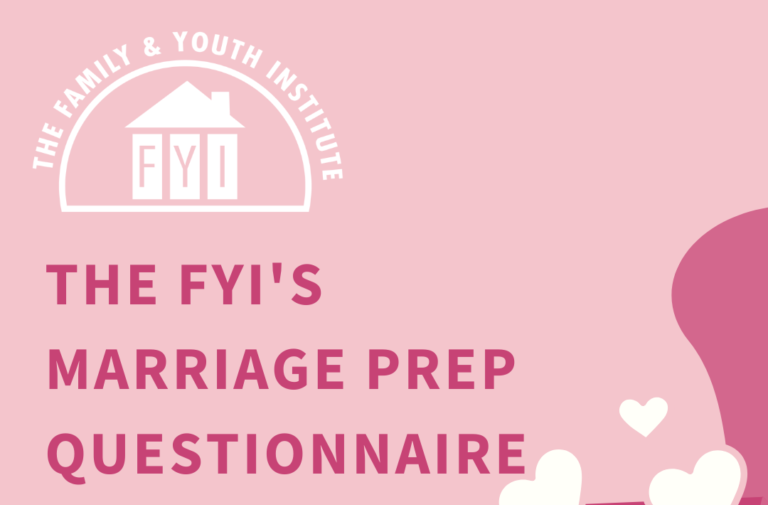
The latest findings on porn consumption in Muslim American communities.
- What does pornography look like among Muslims
- Why Muslim youth are watching pornography
- How can we correct misconceptions around pornography

Are American Muslims immune from pornography consumption? Who is it impacting, when are they starting, and what are the challenges and barriers faced by those consuming pornography? These are just some of the questions The Family & Youth Institute and its partners, Young Muslims, NASEEHA, Zakat Foundation, are teaming up to address.
Guided by the principles of community-based participatory research (Wallerstein & Duran, 2010), The FYI conducted a three-pronged needs assessment of pornography use among American Muslim youth.
- First, we conducted a review of current research on pornography amongst both American-Muslim and other-religion youth.
- Second, we interviewed individuals from diverse professional backgrounds (e.g., clinicians, imam, social worker) who served individuals struggling with pornography. Interviews were coded for common ideas and concepts.
- Third, an online survey was created and disseminated by Young Muslims. The data was cleaned and analyzed by The FYI team.
- The research is ongoing and we are continuing our research efforts by interviewing individuals struggling with pornography. If you would like to participate in this study please email us at: info@thefyi.org
- The research findings were then used to guide the solution-seeking process. In collaboration with NASEEHA, resources have been gathered together in The FYI Porn Addiction Toolkit.
Below, we present preliminary findings from the online survey. A detailed analysis will be provided in the upcoming Pornography Report. To be the first to receive this report, click the button to sign up.
Research Collaboration
Young Muslims (YM) is a national organization serving young Muslims across the country to seek the pleasure of Allah (SWT) by empowering Muslim youth through companionship, mentorship, education, and service. With more young people reporting struggles with pornography, YM launched an online survey. The online survey was conducted during the COVID-10 pandemic (2020-2021) and 350 Muslim American youth participated in the study. The FYI then cleaned and. analyzed the data.The FYI was then contacted to analyze the data, as well as provide resources for those struggling with pornography.
*The findings presented below are based on data generously shared by Young Muslims. All responses are confidential and information regarding IRB and consent will be presented in the upcoming Report*
Demographics
The survey respondents were predominantly between 16 to 22 years of age (85%), mostly males (69%), mostly single (85%) and primarily South-Asians and Arabs (67% and 16%).
Limitations to the dataset include: religiosity, race/ethnicity, age, gender, voices of revert Muslims, and those of varied socioeconomic backgrounds. Due to the use of convenience sampling, the survey is not representative of all Muslim Americans and is a snap shot that is meant to provide a preliminary understanding of pornography among Muslims. The dataset was cleaned to remove inconsistent responses (i.e. individuals who marked no to viewing pornography but responded to follow up questions or vice versa). The final dataset (n = 336) was used for the remaining analyses presented below. If you are a researcher and would like more detailed information regarding the data, please contact The FYI at info@thefyi.org.
What does the data tell us about pornography among Muslims?
Do young Muslims watch porn?
Yes, many young Muslims (59.23%) view pornography; of these, 83% were males and 17% were females. We talk more about gender differences further below in the Breaking Down Myths section.

How frequently do young Muslims watch porn?
The majority of young Muslims in this sample report watching pornography monthly and/or weekly. A small portion watch it daily (16.08%).

Why do young people watch pornography?
In this section, youth respond to questions about why they view porn. Participants responded on a scale of 1 = Never to 5 = Very Often. Overall, Muslim youth consume pornography primarily to cope with boredom, and to a lesser extent, to process negative emotions.




To access free resources on reducing, preventing, and addressing the impact of pornography, click the button to get the Porn Addiction Toolkit.
Can Muslim youth turn to their families or communities for support?
Youth responded to questions about turning to parents or community for support as they struggle with pornography. They responded on a scale of 1 = Strongly Disagree to 5 = Strongly Agree.
Muslim youth believe they can not turn to their families or the Muslim community for support.


Breaking Down Myths
In this section, common myths about pornography in the Muslim community are presented. We compared behaviors and beliefs between youth who reported that they view pornography and related questions to those who said they do not view pornography. Here’s what we found:
Do those who watch pornography think it is less immoral?
Youth in both groups agreed that watching pornography is immoral. There was no statistically significant difference in their beliefs. This finding suggests that holding a belief that something is immoral is not sufficient, by itself, to prevent individuals from engaging in that behavior.
This finding suggests that holding a belief is immoral is not enough to prevent individuals from engaging in behaviors that go against their beliefs.

Are those who watch pornography less religious?
No statistical difference in religiosity, between youth who consume pornography and those who do not. Both groups of youth also attend the masjid (mosque) at similar rates. Of those who reported viewing pornography (N=199), 70% describe themselves as regularly or very practicing and believe that viewing pornography is immoral.


Do women watch pornography?
Compared to men, women do not consume as much pornography. Of all the participants who report viewing pornography, 83% were men, and only 17% were women. However, when you compare within the study the female respondents (n=105), 31% reported they viewed pornography, compared to 69% of women who did not. This means about a third of young Muslim women consumed pornography in this survey.

When do youth first get exposed to pornography?
It is commonly assumed that youth are exposed to pornography in high school and college. With the ease of access to pornographic material online, individuals are being exposed at earlier ages. A majority (61%) of Muslim young adults were exposed to pornography between 11 to 14 years old.

In conclusion, the preliminary findings from this survey suggest that consuming pornography is a prevalent issue among young Muslims. Both young men and women engage in this behavior, even if they are religiously practicing. Most importantly, youth do not feel that they can turn to the Muslim community or their families for support. Due to this rising struggle and the lack of support for it, The FYI has created a host of resources on pornography.
Please check out the upcoming FYI Report for additional analyses digging into the findings presented here, and additional analyses about the addictive nature of this behavior. If you are interested in participating about our upcoming research study, please contact us at info@thefyi.org.

This data analysis was conducted with generous support from The Zakat Foundation.




